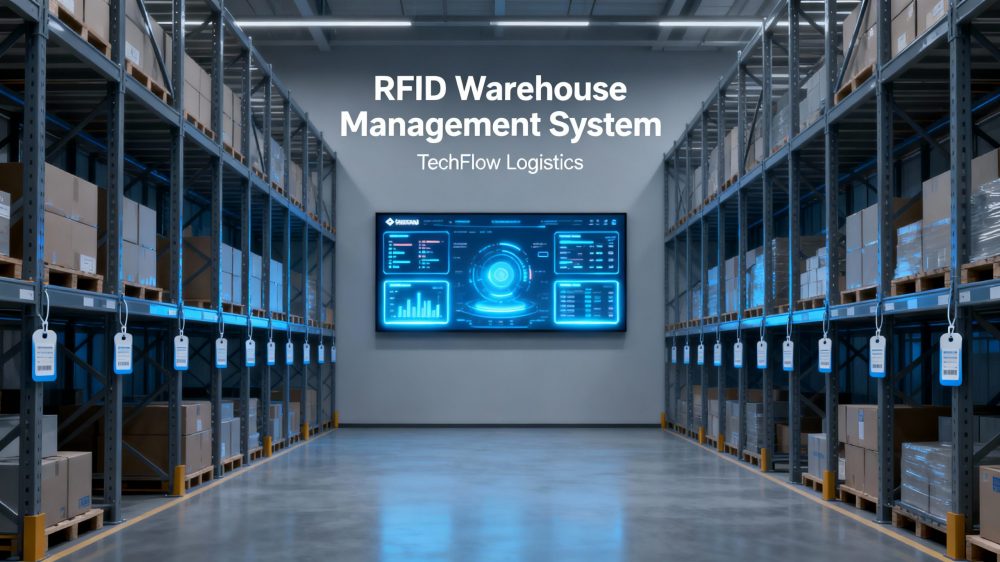In business, efficiency and accuracy of data have become major drivers of success. To achieve increased visibility, control, and asset utilization levels, organizations of all sizes are turning to smarter technology. One of the most promising technologies is the RFID tag, which has provided real-time visibility into assets, inventories, and operational performance for logistics companies, retailers, and health care facilities, amongst others.
RFID Tags: Understanding Them and Their Functions in Asset Tracking
RFID tags consist of a microchip and an antenna, which enable radio frequencies to wirelessly send information to RFID readers, and tags do not have to be in line of sight of readers. As data can be read automatically from several feet away, even through packaging or walls and RFID tags store a single unique information corresponding to the asset to which it is affixed. A business can identify and track thousands of items in seconds by utilizing RFID tags. The immediate collection and processing of data transformed the way organizations monitor their resources. RFID tags provide a guarantee that each resource, whether it be equipment, a vehicle, a tool, or a document, can be tracked and identified.
Why Transforming to RFID Tags for Full Visibility
Real-Time Asset Tracking
Leading organizations have adopted RFID in order to gain real-time visibility of their assets. For example, logistics companies can track shipments moving across supply chains using RFID tags. In this manner, items or containers tagged with RFID instantly update
their record as they pass within scanning distance, both of fixed and handheld readers, reducing the possibility of incorrect manual entries and accelerating processing with precise location tracking across the stages of delivery.
Minimising Losses and Theft
The industries of construction, manufacturing, and retail face big hassles due to asset loss caused by misplacement or theft resulting from a lack of accountability. RFID systems reduce these challenges by sending instant alerts when tagged items move outside designated zones. Through automatic records concerning asset movement, one is able to quickly spot irregularities within these businesses to prevent losses before they happen.
Improving Inventory Management
RFID tags enhance the inventory tracking process by eliminating manual counts. Today, retailers and warehouses can use RFID readers to scan hundreds of items within seconds and track their inventory efficiently. By doing so, stock levels remain accurate, preventing overstocking or items running out of stock. In addition, automation lowers labor costs, increases productivity, and improves supply chain visibility.
Operational Efficiency Enhancement
Decision-making is quicker and more informed with 100% asset visibility. Maintenance schedules, equipment utilization, and workflow planning are optimized as managers can view in real time which assets are available or in use. Predictive maintenance and process improvements are possible through RFID-based data analytics.
Compliance and Audit Readiness
Most industries, but especially healthcare, aviation, and finance, have very strict audit trails. RFID automatically logs every transaction and movement, thus creating a transparent record for audits. For example, hospitals use RFID to track medical instruments in order to ensure safety and regulatory compliance without administrative overhead.
Real-World Applications of RFID Tags
Retail: Major retailers have implemented RFID to do effective stock control, reduce shrinkage, and enable efficient omnichannel fulfillment.
Healthcare: Hospitals utilize RFID to monitor equipment, medications, and patient records to help eliminate errors from patient care and improve patient care quality.
Manufacturing: RFID tags can be used to track many tools, parts. And finished products as they progress through the manufacturing process.
Education and Libraries: Education institutions track class attendance, equipment, and quick circulation of library books using RFID.
Transportation and Logistics: An RFID system keeps track of fleet movement, cargo status, and even the warehouse inventory. Thus, these services enhance transparency and increase customer satisfaction.
The Future of Asset Visibility
As IoT and AI evolve, organizations are pairing RFID technology with smart sensors and cloud platforms to gain deeper insights. Businesses are now moving towards predictive analytics concerning demand, identification of inefficiencies, and automation of asset decisions.
Smart asset management, and not just its tracking, is the goal. And the companies that invest in RFID today are setting the base on which they will be able to drive their way into a future-ready data-driven operation. Enterprises such as Poxo RFID Automation, with their innovative RFID solutions, help companies implement these systems effectively; hence, the gap between physical and digital asset management will be bridged.
Conclusion
100% asset visibility is not a hurdle anymore; it is a competitive advantage. Based on real-time control, data accuracy, and operational intelligence, RFID tags can give an organization a competitive advantage.
And as the industries move to adopt and adapt this technology, the ones using RFID effectively will only see improved efficiency and go ahead to earn the competitive advantage needed to thrive in an ever-connected intelligent world.
